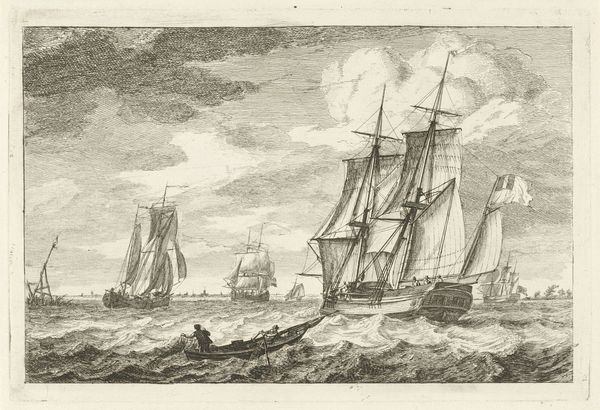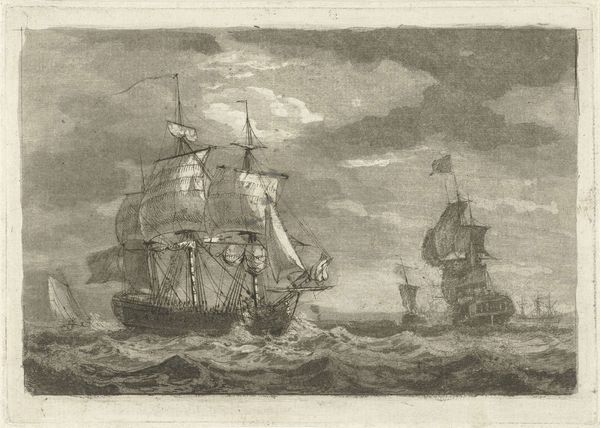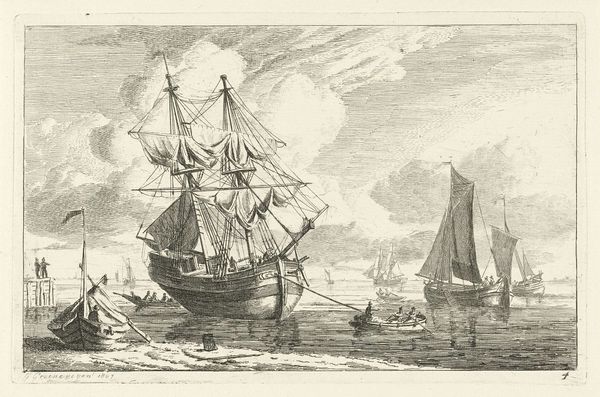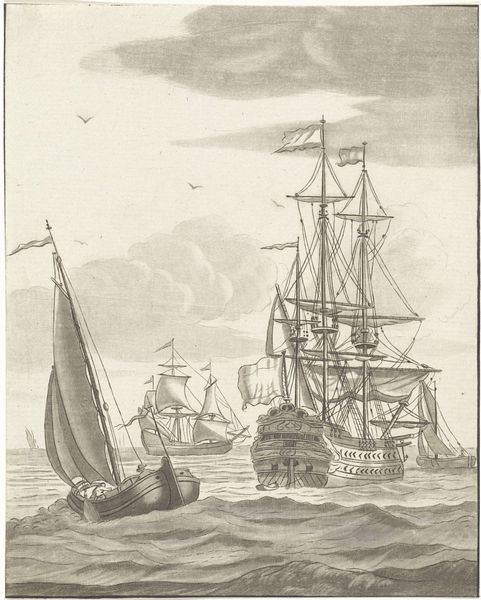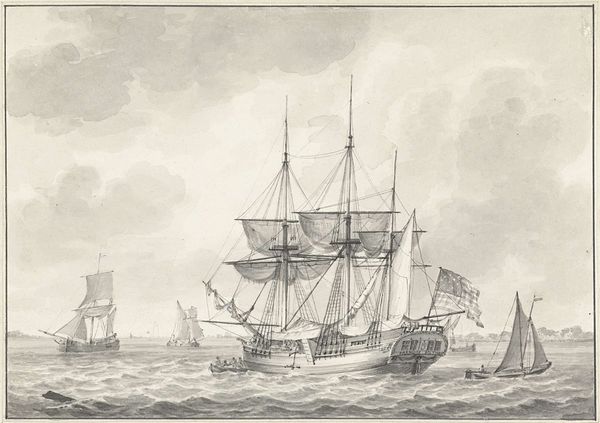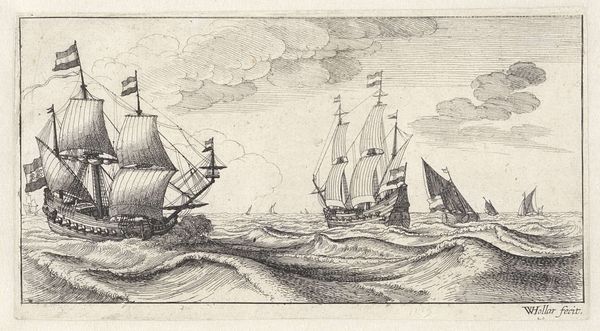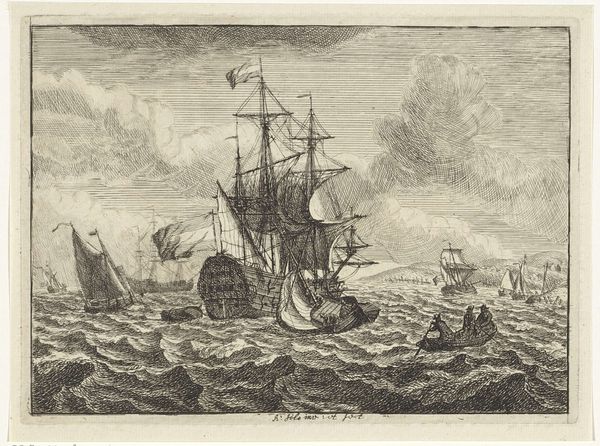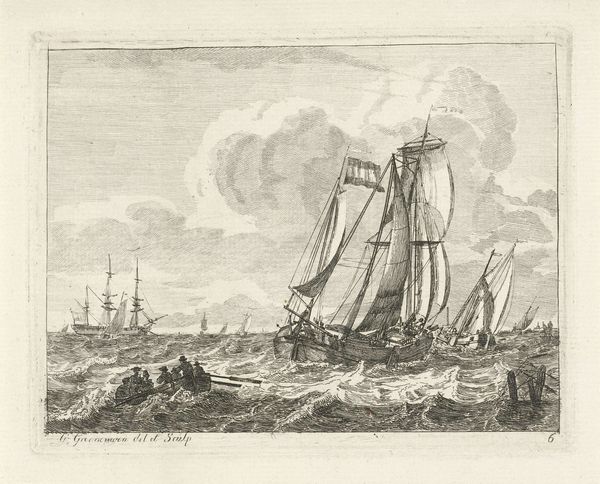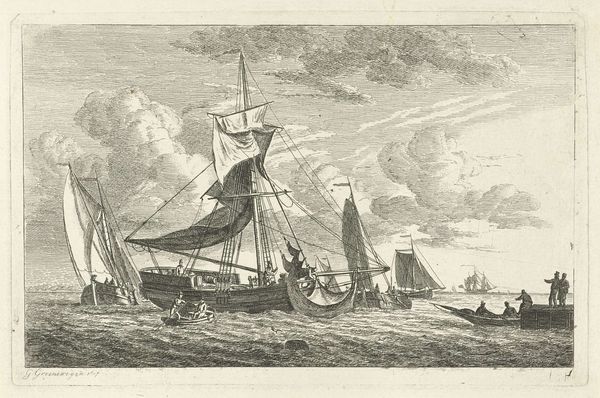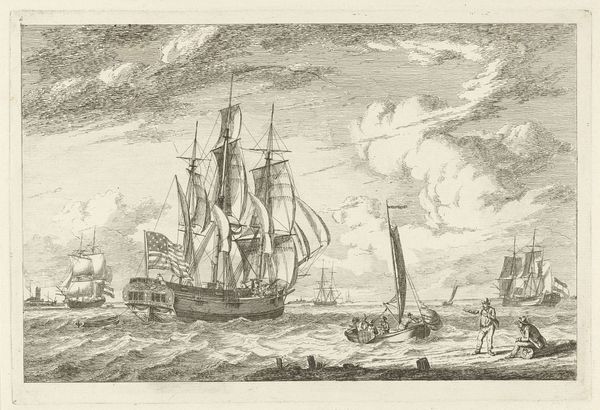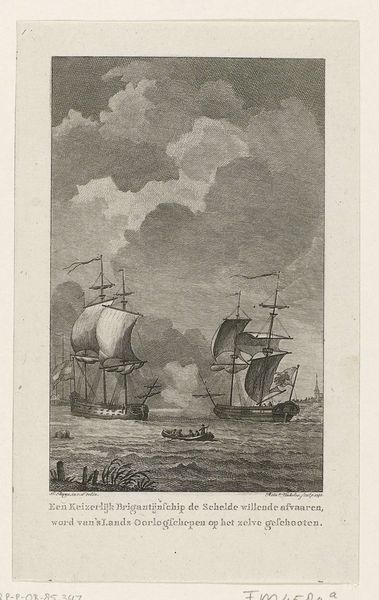
Dimensions: height 155 mm, width 190 mm
Copyright: Rijks Museum: Open Domain
This print, called Fuselier, shows a naval battle, rendered with a crispness that only the engraving process can provide. A copper plate would have been meticulously incised with tools called burins, creating fine lines and cross-hatching to define the image. This was a laborious, skilled practice; each print pulled from the plate would have been identical, reflecting the ethos of reproducibility that was emerging during the period. The medium of engraving was critical to the distribution of information and propaganda, making it the perfect choice for depicting ships, symbols of global trade, colonial power and military might. Consider how the sharp, precise lines used to depict the ships contrast with the more organic, flowing lines used for the sea and sky. The engraver was interested in the technology of naval warfare, but also in the sublime power of nature, the theater in which conflict plays out. Ultimately, understanding the materials and techniques used in 'Fuselier' allows us to appreciate its role in shaping public perceptions of maritime power, revealing the intricate relationship between art, technology, and society.
Comments
No comments
Be the first to comment and join the conversation on the ultimate creative platform.
